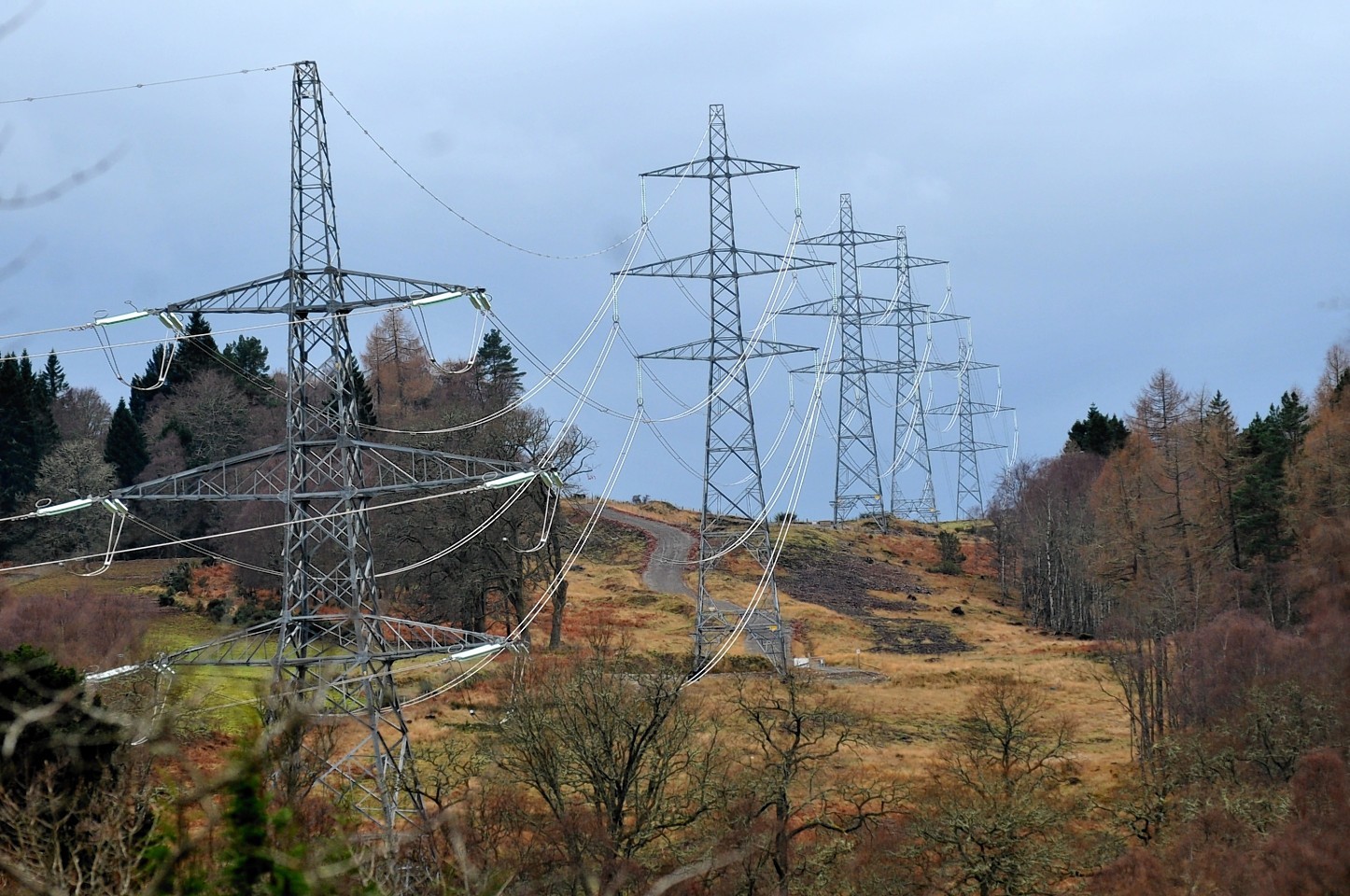Campaigners fear huge areas of countryside could be destroyed by a line of massive electricity pylons stretching from the Highlands to Aberdeenshire.
Scottish Hydro Electricity Transmission (Shet) has drawn-up initial plans to build a new Beauly-Denny-style string of towers – to “keep the lights on”.
But the scheme, which will be unveiled at a series of public exhibitions later this month, was already facing a backlash last night and is expected to be fiercely opposed by local conservation groups.
The 400kV Beauly-Denny line – which has 200ft pylons – replaced a smaller one and passes through a number of sensitive areas.
Thousands of people protested against the scheme.
Shet yesterday refused to reveal details of the new project, which could stretch 103 miles from Beauly in Inverness-shire to Keith in Moray and then on to Kintore in Aberdeenshire.
The exact route has
not been decided, but the energy giant has given a broad indication of the “corridor” it will follow.
And it pledged the route would avoid “sensitive areas”, including the wild landscape of the Dava Moor, the Cairngorms National Park and the Moray Firth coast.
But the firm refused to say how much would be invested in the scheme or how high the pylons would be.
However, campaigners already fear it will have echoes of the Beauly-Denny project.
Pat Wells, co-ordinator of the Save Strathdearn campaign, said the pylons on the new line could be as tall as those on the existing one.
She said: “The big concern really is that we would have to put up with another ghastly power line and huge pylons, when in fact there may be no requirement for it in the future.
“Until we know the route it is a very great concern because we are pretty sure it will not go through the national park.
“Another option is to go along the east coast but the argument against that is that there are a lot more houses and that would be more intrusive.
“The alternative is via Tomatin either north or south, and to go across the Strathdearn and the Dava Moor would be criminal. It is just appalling. We will fight this tooth and nail.”
She also called for Shet to hold public meetings to discuss the plans.
Eddie Hughes, a former chairman of Highlands Before Pylons, which campaigned against the Beauly-Denny plans, said he believed the company should consider burying the power cables.
He added: “SSE (the parent company of Shet) runs roughshod over public opinion.
“My sympathies are with anybody who will be able to see the impact of any further pylons.”
Helen McDade, of the John Muir Trust charity, said the Beauly-Kintore route had been suggested as an alternative to the Beauly-Denny line.
She added: “The John Muir Trust has concerns at the number of applications for major lines coming forward.
“We are not convinced the cost benefit of some these lines is established.”
But Neil Anderson, Shet’s community liaison officer, said: “We are telling people that we are coming out to speak to them about a potential new overhead line going from Beauly to Blackhillock and then to Kintore. We are at the start of the project.
“We are trying to avoid sensitive areas, such as communities and the Cairngorms National Park.
“The simple reason we need it is to keep the lights on.”
He added that at this stage only an overhead line was being considered. Mr Anderson said extra substations would be needed if the line was buried underground.
He also claimed many people had said the Beauly-Denny line had not destroyed the landscape.
He said: “A lot of people have said that they are not that bad.
“There will be people with concerns but we will be able to address them.”
He added that the company would be liaising with the three affected local authorities – Highland, Moray and Aberdeenshire councils.
